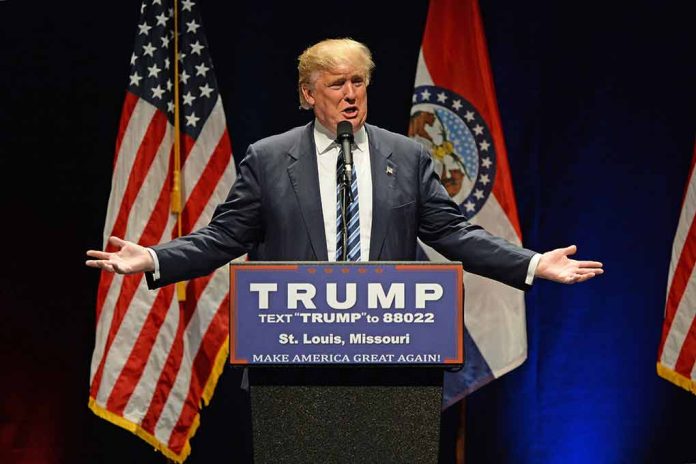
Donald Trump’s economic agenda brings both advocacy and controversy, making waves as it proposes bold shifts to the U.S. framework.
At a Glance
- Trump’s economic plans feature aggressive border control and energy policies.
- Corporate taxes could drop from 21% to 15%, with tariffs increasing significantly.
- Critics foresee potential negative impacts on national debt and economic output.
- Deportation policies could harm employment and GDP, critics claim.
Revisiting Previous Policies
Donald Trump has firmly declared his intention to continue his previous economic agenda, focusing on a path towards robust economic growth and a freer market. His plans feature scaling down government regulations and lowering corporate tax rates to just 15%. Trump’s advocates see these steps as foundational for propelling the American economy forward.
Yet, these plans do not come without contentious elements. Deportations are set to rise dramatically with proposals to remove up to 8.3 million undocumented workers. This move, critics warn, may decrease U.S. GDP and inflate prices significantly, threatening U.S. economic stability and employment.
Impact of Trading Policies
Trump’s tariff proposals are among the most controversial aspects of his agenda, proposing a regular tariff of 10-20% on imports, and a striking 60% on Chinese goods. Economists predict these tariffs as significant burdens on consumers and businesses, translating to higher prices and less economic dynamism.
Analysts caution against these tariffs, emphasizing their potential to diminish after-tax incomes by 3.5% for the lower half of the income distribution. Predictions indicate a typical household could face an additional $1,700 annually in tariffs, an economic strain that may ripple through various sectors.
Broader Economic Implications
Broader economic concerns also loom over Trump’s agenda. These policies threaten to erode the Federal Reserve’s independence, with implications of increased inflation and capital outflows. The same tariffs herald risks of recessions expected soon after they are implemented, with inflation suggested to spike by 0.7 percentage points.
“If Trump increases tariffs as he has proposed, the economy would likely suffer a recession soon thereafter” – Mark Zandi
While Trump’s agenda is lauded by some for its potential to spur economic activity and restore U.S. jobs back home, many debates rage over the long-term impacts and the ensuing clash between prospective growth and economic challenges underpinning his policies.
Sources
1. Trump Trade And Immigration Policies Spell Higher Prices, Less Growth
2. How Trump’s Policies Could Reshape the U.S. Economy









